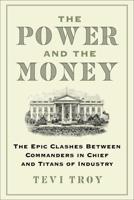Publisher's Synopsis
The 'Wild West', or American Frontier as it is also known, developed in the years following the American Civil War. However, this period of myth-making cowboys, infamous gunslingers, not always law-abiding lawmen, and saloon madams, is as much the product of fiction writers and film makers as reality. The outlaw came into his, or indeed her, own in the mid to late 19th century. Some of these individuals, men such as Billy the Kid, William Clarke Quantrill, Butch Cassidy or Harry Longabaugh, better known as the Sundance Kid, became household names. Many of those who roamed America's West in the period between 1850 and 1900 often appear as colourful, romanticised, legendary characters. This includes the likes of Frank and Jesse James, who had stepped outside the law due to the harshness of life after the Civil War or under circumstances beyond their control. The majority of outlaws, though, were anonymous common criminals. In 1877, for example, the State Adjutant General of Texas, published 'wanted posters' for some 5,000 outlaws and bandits in the Rio Grande district alone, almost all of whom have since vanished into the mists of time. When it comes to the Wild West, it is important to separate fact from fiction. Of the known recorded killings by the various outlaws and gunfighters, Billy the Kid killed four men, not the twenty that some writers attributed to him. A notorious gunslinger, John Wesley Hardin was said to have killed twenty-seven men, but was only charged with one murder. Wild Bill Hickok killed three men, two of them in Abilene whilst he was City Marshal, and one in Springfield, Missouri, for which he was tried and found not guilty. Clay Allison, however, was thought to have killed at least fifteen men in his time as a gunfighter, whilst some of the outlaw gangs, such as the Rufus Buck Gang and the Evans Gang, were particularly violent and ruthless. The days of the outlaws of the Wild West gradually came to an end at the turn of the nineteenth into the twentieth century. The legends, however, live on.








